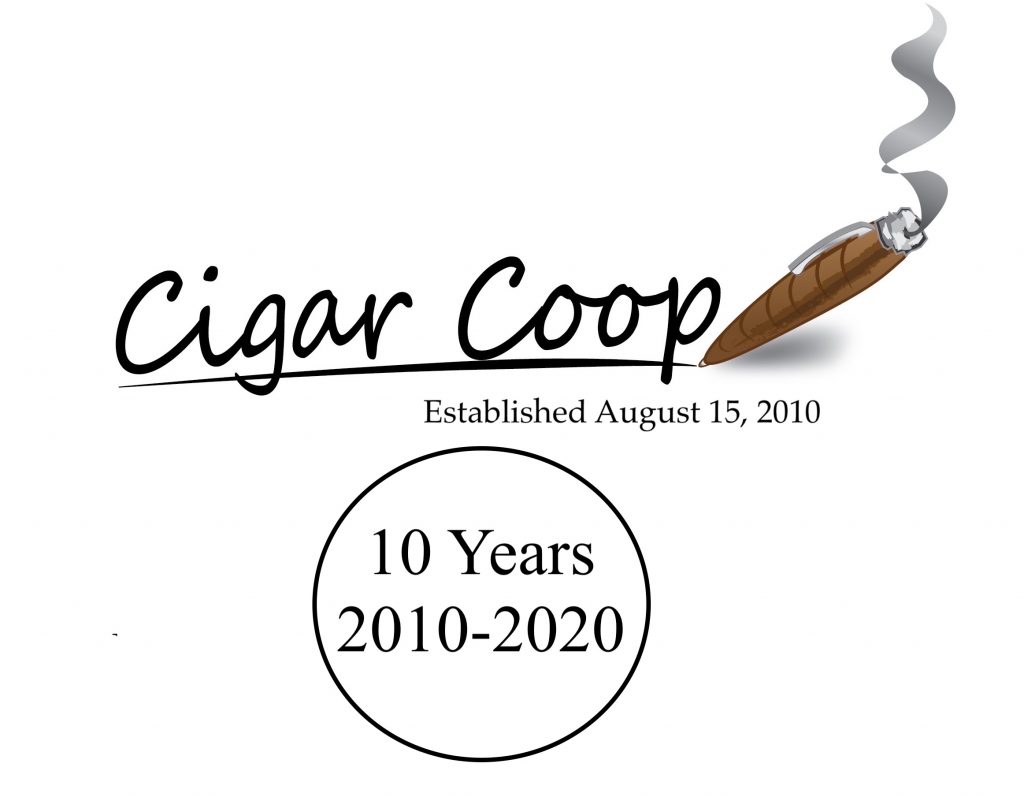“I knew I wanted to take this ‘thing’ called Cigar Coop that I developed from a short-term project to something ongoing. At the same time, I had no idea where I wanted to take this, nor any idea what it would take to make it happen. In the end, the first 17 months was one of an evolutionary experience.”
When “Tales from the IPCPR” was complete, I knew that the goal of documenting my stories from the 2010 IPCPR was also complete. The two questions I had on my mind was what was this going to become and how was I going to do it. At the time, I didn’t know the answers to either question.
The Reviews
In 2010, the way online media was primarily getting into the cigar industry space was through the cigar reviews. I had actually attempted one embedded with one of the “Tales from the IPCPR” installments. Reviews seemed to be the gateway into media. It was what everyone else was doing. The problem was, I really had no idea how to do them well. There wasn’t a textbook or a manual to do it. Every website seemed to go about it in a different way.
What really surprised me is that cigar companies were reaching out to me to review cigars even after my pitiful attempt at the “Tales from the IPCPR” series.
Fred Rewey, the former owner of Nomad Cigar Company, wrote a book and did a series of podcasts called “Be the Lime.” When the book came out in 2017, it was the single most influential piece of material I ever read – and it really helped me set the stage for the Prime Time podcasts. In the book, Fred defines the “lime” as being something that would stand out in a world with lots of lemons. Back in 2010, there was no “Be the Lime,” but I knew I needed to be something like a lime among lemons to stand out. I just didn’t have a feel for what I should do differently than what was already out there.
So I tried a variety of different things. I even decided I wouldn’t do numerical scores. I had a five tier rating system in place that I imagined would the greatest thing since sliced bread. It was not! It was an awful system. The reviews were even more awful in 2010. They were not something I wanted to read, and in fact, they bored me quite a bit.
In 2011, I was starting to develop a structure that would fleshed out and updated as time passed. It was with my review in March 2011 of the E.P. Carrillo Short Run 2010 that I set up the template for my reviews. While developing that structure, I laid out what I thought was important to be included in a review. These were four fundamental components:
- Background of the cigar
- The specifications of the cigar (blend, sizes, etc)
- How the cigar performed
- Overall impressions
One thing I wanted to accomplish with #1 and #2 was to educate my readers about the cigar. With #3 and #4, I could give my opinions, but I always wanted equal footing between the education piece and the opinion piece.
As time went on, what worked for me was to make sure the cigar was the focus rather than my opinions. This led me to want to seek information and learn more about that cigar. Improvements to writing quality and photography would eventually follow – and were easier to do as I wrote more reviews.
Eventually, I added a numeric score on the 100 point system alongside that awful five tier system. Later, that five-tier system would be replaced when the merger happened with Stogie Geeks. More about that in a subsequent installment.
The News
There was never a plan to cover news on Cigar Coop. When I started Cigar Coop, I operated under the assumption that the industry leveraged media to get the word out about its happenings. It didn’t take long to realize there was not just a void, but a gap that could be filled. At the time, I didn’t expect to build a bridge to fill the gap.
Even before I came up with the template for cigar reviews, my goal was to gather as much information about a cigar as possible. I was surprised to find that the information was difficult to find, if not impossible. I was lucky if I could find all the information I wanted on the Internet. There was some stuff on Cigar Aficionado and Cigar Dave had some tidbits of information. Pearlman’s Cigar Cyclopedia which was probably the best reference, but even that was incomplete. I often could only get adequate information by reaching out to cigar companies.
What I also discovered was that, outside of Charlie Minato’s old website “The Cigar Feed,” there was a lot of incomplete information on the online cigar media. In my discussions with companies, I was able to validate what was incomplete. Still, it wasn’t my intent to cover anything news related.
One day I happened to learn about a cigar from Alec Bradley called “Alec Bradley New York” and it was an intriguing cigar project for me. It was a cigar being released for the New York market as a way to help New York retailers then getting hit with outrageous cigar taxes. As I came across this information, I spoke to someone I knew at a local lounge and he said “why don’t you put this on your blog?” I was intrigued by the idea and decide to share the information, and thus I created my first news article. In hindsight, it was a terrible article. It was written from a cigar enthusiast/fan-boy point of view. It had no validated information. However, like everything it provided a starting point. https://cigar-coop.com/2010/11/2011-preview-alec-bradley-new-york.html
The idea was that I could provide what were “Cigar Previews” of new and upcoming releases. I realized early that the first article was not up to standards that I expected. When I started doing more of these “Previews,” I figured the easiest way to get information on new releases was to get on press release lists. But I soon realized that getting on a press release distribution wasn’t easy and that the cigar industry wasn’t like the other industries I knew which sent out press releases on all their products. In the cigar industry, many companies did not do press releases. It took me longer to recognize the hold Cigar Aficionado had on companies controlling press information and to accept that I wasn’t going to be able to take the cigar industry out of the age of dinosaurs when it came to media relations.
From 2010 to 2012, I went ahead with doing “Cigar Previews” and reposting the scattered press releases I was able to obtain. All of the cool kids were copying and pasting those press releases. It wasn’t until 2013 that I started to combine the previews with other information I had to create original news stories. This process introduced the validation element into things. It eventually led to #rumorfree #teaserfree methodology which we will discuss in a future installment of this series.
The “Blog” Word
There was a point in 2011 while I was still crafting the vision of Cigar Coop that I realized that I didn’t want my website to be known as a blog.
There is nothing wrong with the term “blog”. Ultimately I look at blogging as an agile, loose form of journalism with somewhat of a personal angle. It’s fair to say that Cigar Coop fell into that category during 2010 and 2011. As I was evolving its processes, I wanted blogging to be a component of Cigar Coop, but not the focus of Cigar Coop.
In 2011, I also felt the word “blog” had developed a negative connotation in the cigar industry. This goes back to a small number of trick or treaters who had gone to IPCPR back in 2010. These individuals ostensibly went there as bloggers but were primarily just looking to load up on free samples. They ruined it for the majority of the bloggers who were doing legitimate work. Another problem was the work of the late Gary Arzt. Gary had popularity with many manufacturers, but he had a tendency to print a lot of incorrect and unvalidated information. This was another reason why I implemented the #rumorfree #teaserfree philosophy. I think in 2020 many online media people are still paying for the sins of the trick or treaters and the writings of Gary Arzt. This is why I wanted to distance myself from the term “blog” but still build relationships with many of the good bloggers who were out there.
Late last year, I decided a category was needed to have more of an agile, loose approach to complement the more structured work taking place. As a result, “The Blog” was created to be that home. However, I still dislike the word.
Code of Ethics
As Cigar Coop was evolving from an agile blog and incorporating more journalistic practices, I thought it was important to have an operational code of ethics. This led to the establishment of the Cigar Coop Code of Ethics. Like Cigar Coop as a whole, this has evolved over time. One of the big evolutions was the #rumorfree #teaserfree philosophy. This would serve as the foundation for everything done on Cigar Coop.
—
Heading into 2012, I felt the vision for Cigar Coop was starting to take form. However, there was more work to be done to grow this brand. There would be plenty of decisions made for which I have no regrets. At the same time, there would be plenty of mistakes made along the way. As we continue this 10th Anniversary Series, I’ll be hitting on all of these things in subsequent installments to this series.





June 21, 2020 @ 11:50 am
Congrats again Coop!!